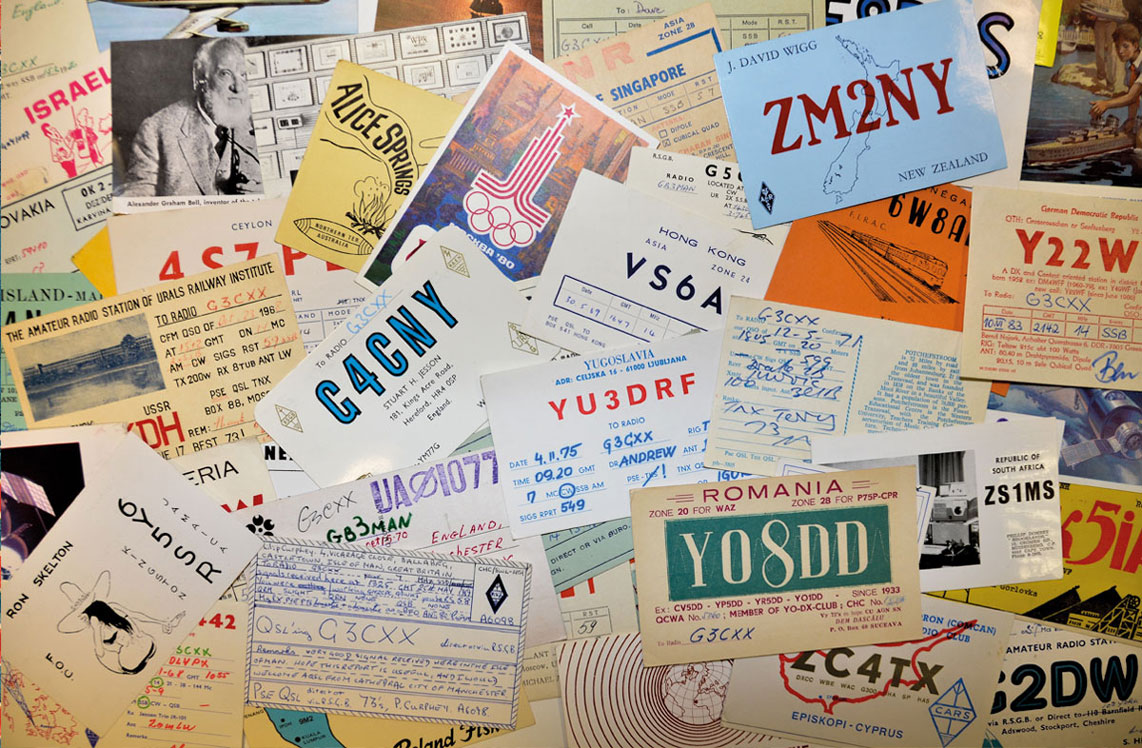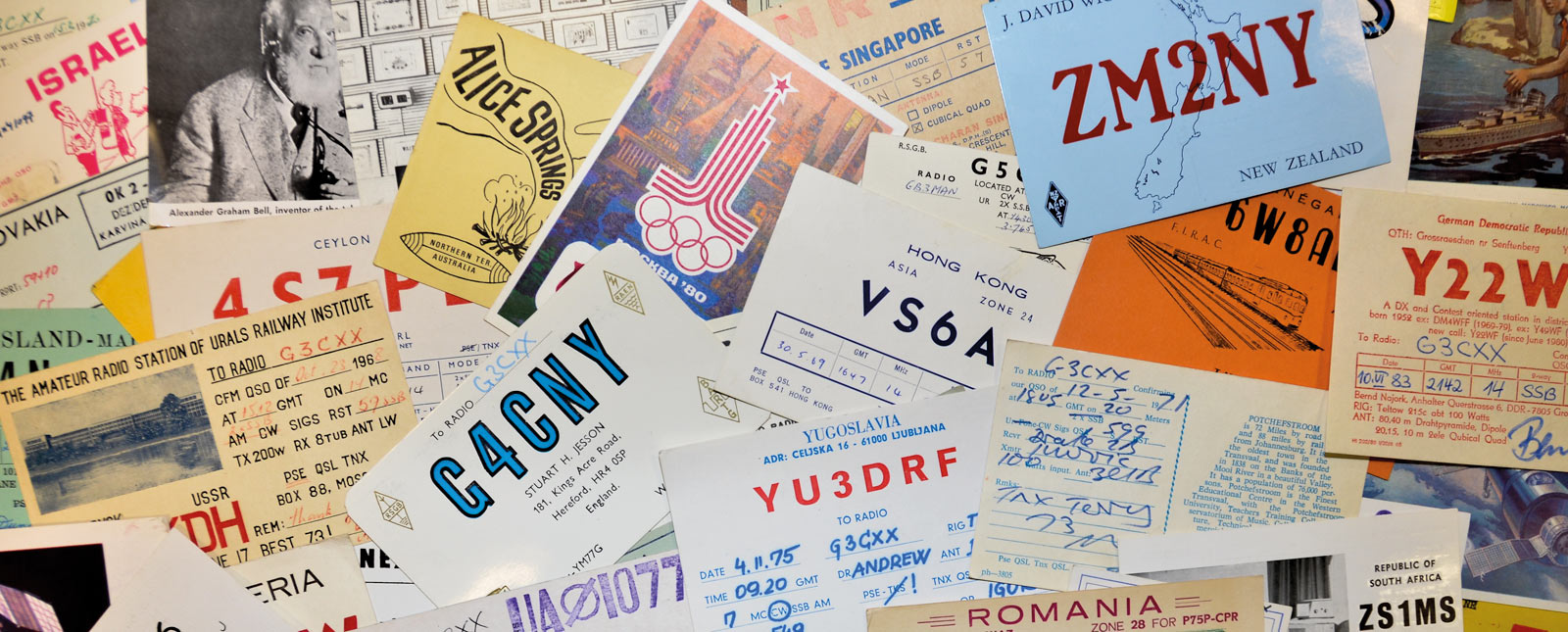Today we can reliably send messages in seconds using email or social media, but these QSL cards are a record of communication from a bygone era.
QSL cards derive their name from the Q code used for radio transmission, where QSL means ‘I confirm receipt of your transmission’.
These shown were sent from amateur radio enthusiasts in Russia, Romania, Singapore, Israel and Australia to staff and student enthusiasts at The University of Manchester Radio Society, which received its radio license back in 1958.
They were proof that radio messages had been skilfully ‘bounced’ between the Earth and the ionosphere – a layer of the Earth’s atmosphere, 80 to 1,000 km above the Earth’s surface, able to reflect radio waves – to their intended target.
Once highly prized trophies, they were found in the Radio Society’s radio shack on the very top floor of our Sackville Street Building, along with some of the radio equipment that would have made and received these messages.
The University’s two radio societies, once hugely popular with our staff and students, are now largely defunct, but the QSL cards take us back to those wide-eyed times, says Peter Green, senior lecturer at our Department of Electrical and Electronic Engineering.
“They are from a different time – before you could just buy a mobile phone – when kids built their own radios.”


